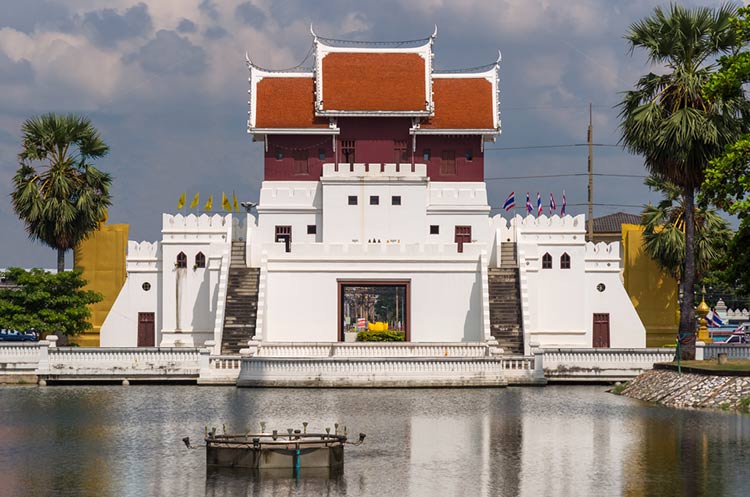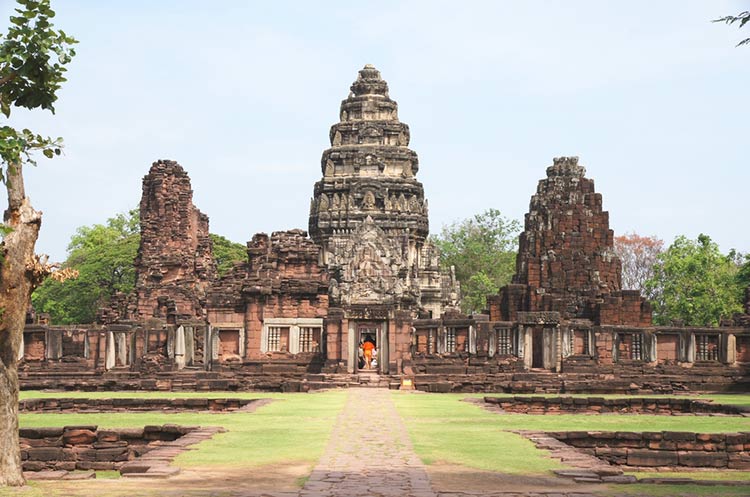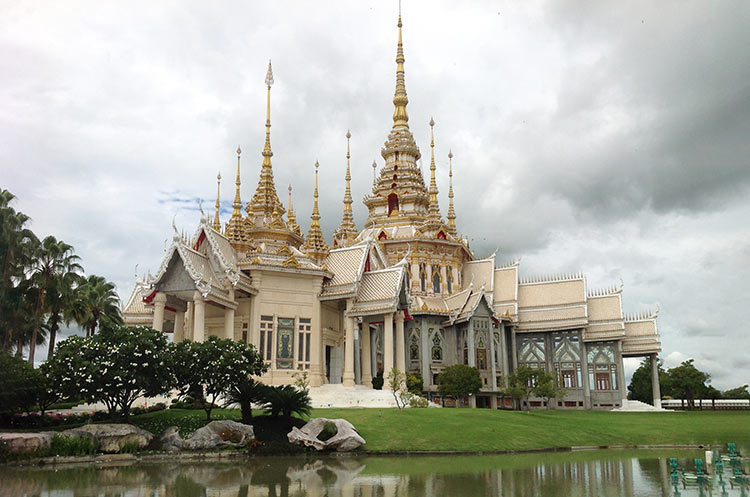
Nakhon Ratchasima
Large province housing many historical sites
Nakhon Ratchasima, also known as Khorat is a large mostly agricultural province in the lower part of Northeast Thailand, the area known as Isan. Its capital is Nakhon Ratchasima town, a large city founded in the 17th century.
About 1,000 years ago the area was part of the Khmer empire. The Khmer build several temples in Nakhon Ratchasima, of which several remain in various states of preservation. The best known is Phimai, a large and important temple in its days.
To do & see in Nakhon Ratchasima
Nakhon Ratchasima offers a number of cultural, historical and natural attractions, as well as a great number of Buddhist temples.
Mueang Sema Historical Park
Mueang Sema Historical Park contains the remains of an ancient city established during the Dvaravati era in the 7th or 8th century. Several centuries later from the 10th until the 13th century the town was under Khmer influence.
Mueang Sema was a large city surrounded by moats and laterite walls. Today little remains of most of its laterite and sandstone ruins. The Thai Fine Arts Department has carried out excavations at the site and partially restored a number of monuments. Very well preserved is a sandstone Buddha image measuring over 13 meters long. The Dvaravati style 7th or 8th century image is the oldest reclining Buddha image in Thailand. The image is sheltered in a modern structure of the Wat Dhammachakra Sema Ram temple, also known as the Wat Phra Non (“temple of the sleeping Buddha”).
Mueang Sema Historical Park is located in Sung Noen district, about 35 kilometers West of Nakhon Ratchasima town. The park opens daily from 9 am until 4 pm.
Ban Prasat Historical Site
Ban Prasat is a small archaeological site where prehistoric graves and burial goods have been discovered. The Thai Fine Arts Department has excavated three burial pits containing skeletons and burial goods, such as pottery, bangles and seashells. The earliest graves are about 3,000 years old, the latest are from the Stone Age, about 500 BC. Today the site is still inhabited. The pits sheltered by modern structures are located between the houses of the present day village. Ban Prasat is located about 45 kilometers Northeast of Nakhon Ratchasima town.

Phimai Historical Park
The largest and most important Khmer temple in Thailand is located at Phimai Historical Park. The monument has been restored by the Thai Fine Arts Department. It was build during the 11th and 12th century as a temple dedicated to the Buddha. The central sanctuary consisting of three prangs is surrounded by extensive galleries. The temple was located at the end of the ancient highway which connected Phimai to Angkor Thom, the capital of the ancient Khmer empire.
The nearby Phimai National Museum exhibits objects from the Dvaravati era which preceded the Khmer era, numerous Khmer objects including stone carvings in lintels, pillars, pediments and Buddha images from the 13th century onwards. Among the highlights are a 13th century sandstone statue of Angkor King Jayavarman VII and an 11th century Baphuon style statue of the Hindu God Shiva. Phimai Historical Park is located about 60 kilometers Northeast of Nakhon Ratchasima town.
Wat Luang Phor Toh
Possibly Nakhon Ratchasima’s most impressive temple, the Wat Luang Phor Toh is a large temple complex with several buildings, well maintained gardens and a number of ponds. The largest building of the complex, a very ornate structure with multi tiered roofs topped with several golden spires enshrines an enormous statue of Luang Phor Toh, a highly venerated monk. Devotees make merit by offering flowers and burning incense sticks. Wat Luang Phor Toh is located along Highway 2, about 40 kilometers West of Nakhon Ratchasima town. The place can get very crowded on weekends and Buddhist holidays.

Old city gates & Thao Suranaree monument
Nakhon Ratchasima town was founded in the 17th century. Several of its old city gates have been restored. In front of one of them, the Chumphon gate, is the Thao Suranaree monument, a statue of the heroine of Korat, Ya Mo (“Ya” meaning grandmother). In the early 19th century Nakhon Ratchasima was invaded by the Laos King Anouvong. Ya Mo saved the city and its population after it had been invaded by the Laotian army. To this day Ya Mo is highly revered by local people who pay their respects by offering flowers and burning incense sticks.
Dan Kwian pottery village
Dan Kwian is a village on the banks of the Mun river in Chok Chai district of Nakhon Ratchasima. For generations people have been making pottery from clay taken from the river. Traditionally items for every day use like water jars were produced, in recent years the villagers have started making decorative wares as ceramics. Visitors can watch how the wares are produced and buy them in one of the village shops.
Getting to Nakhon Ratchasima
Nakhon Ratchasima is located 260 kilometers Northeast of Bangkok. There are several ways to get there.
Air
Nakhon Ratchasima airport is located East of the town. Currently there are no scheduled flights from Bangkok.
Train
Trains to Nakhon Ratchasima town depart from Bangkok Hua Lamphong station. The 264 kilometer trip takes between 4 and 5½ hours depending on the type of service. Fares are 50, 115 and 230 Thai Baht for third, second and first class.
Check details and how to get tickets at Travel Thailand by train.
Bus
Ordinary and air con buses to Nakhon Ratchasima town leave from Mo Chit II bus terminal on Kamphaeng Phet 2 road in Bangkok. The trip takes about 4 hours. Fares vary between 170 and 230 Thai Baht depending on the type of service.
Buy tickets online
Tickets for flights, bus, train or taxi from Bangkok or another city can be bought online at the 12Go website.